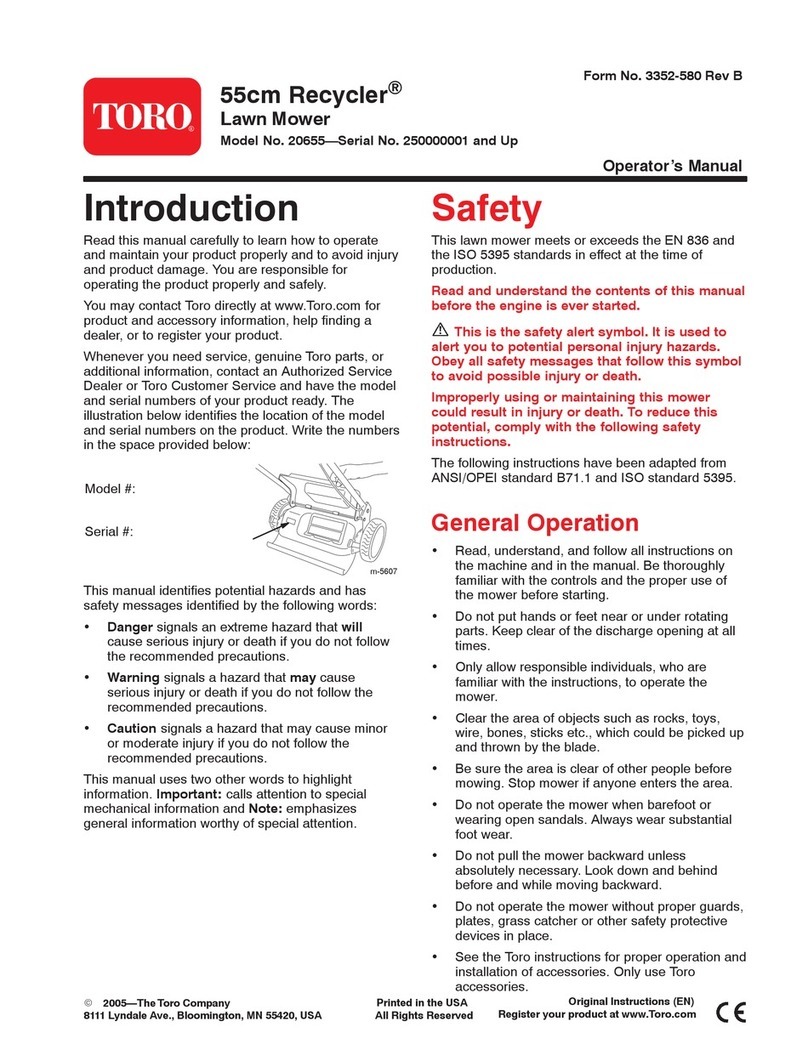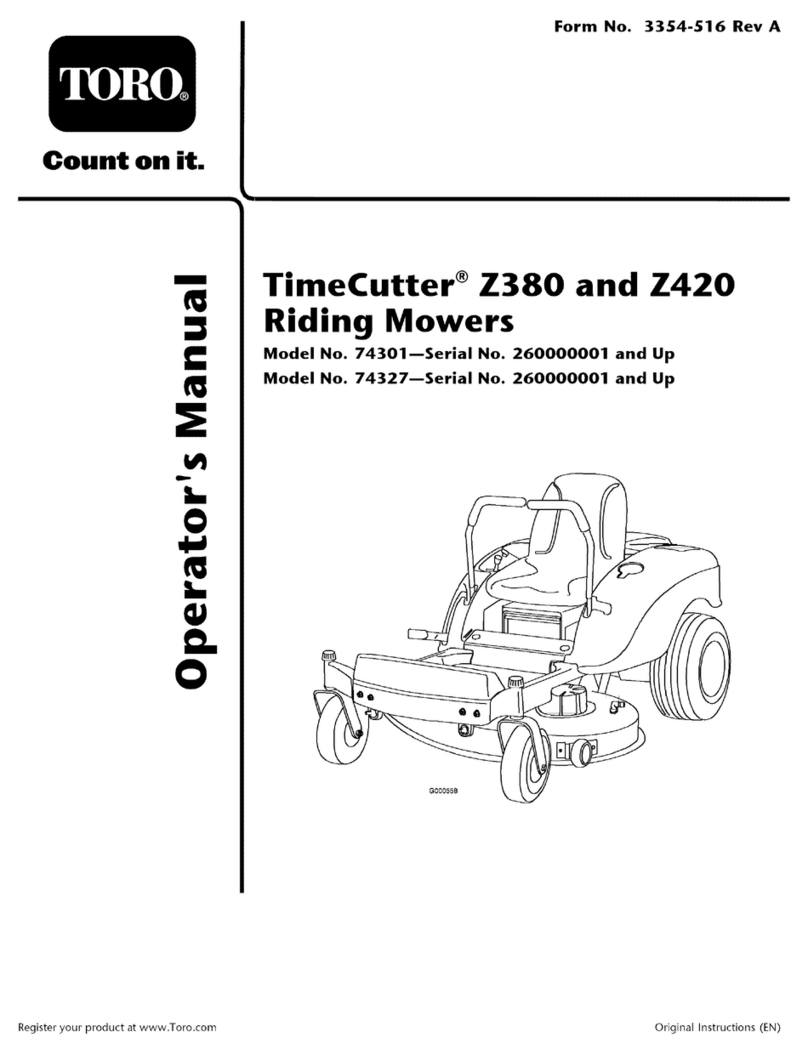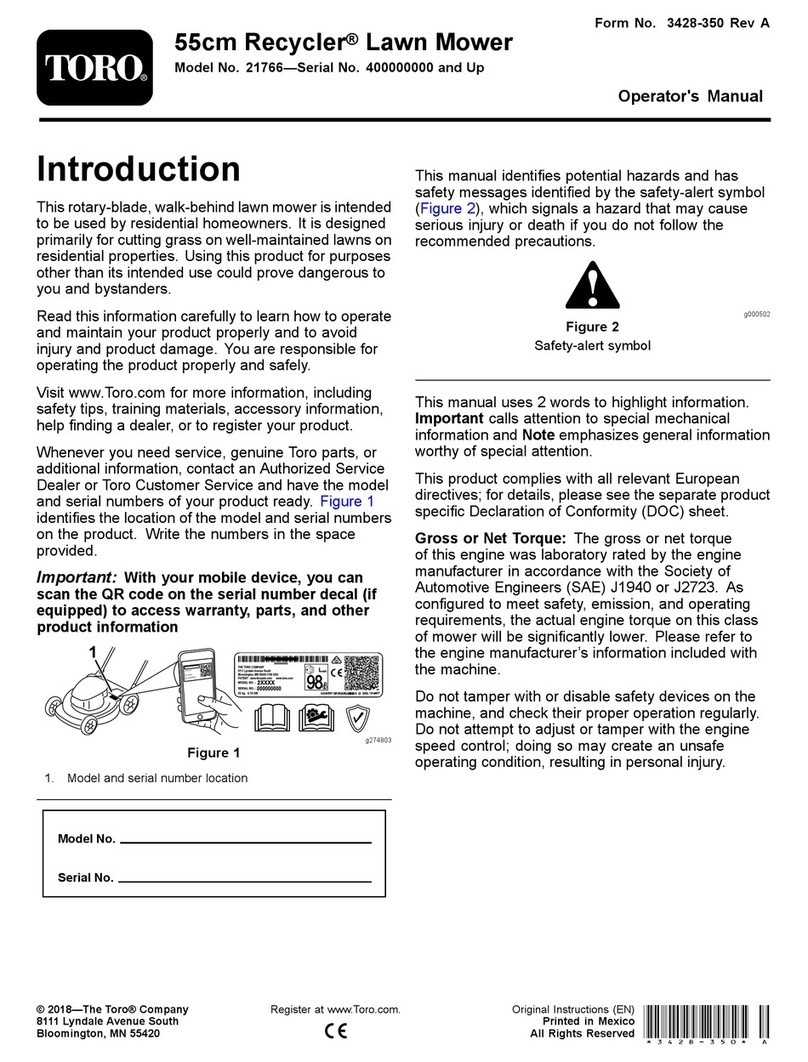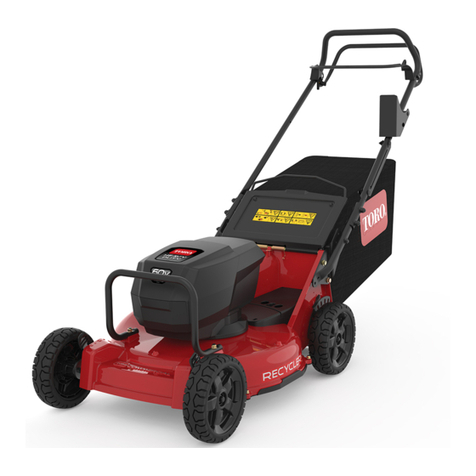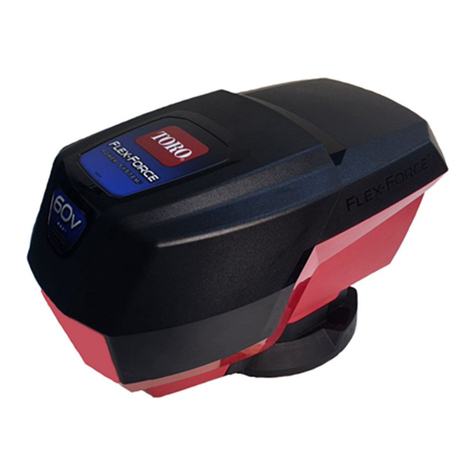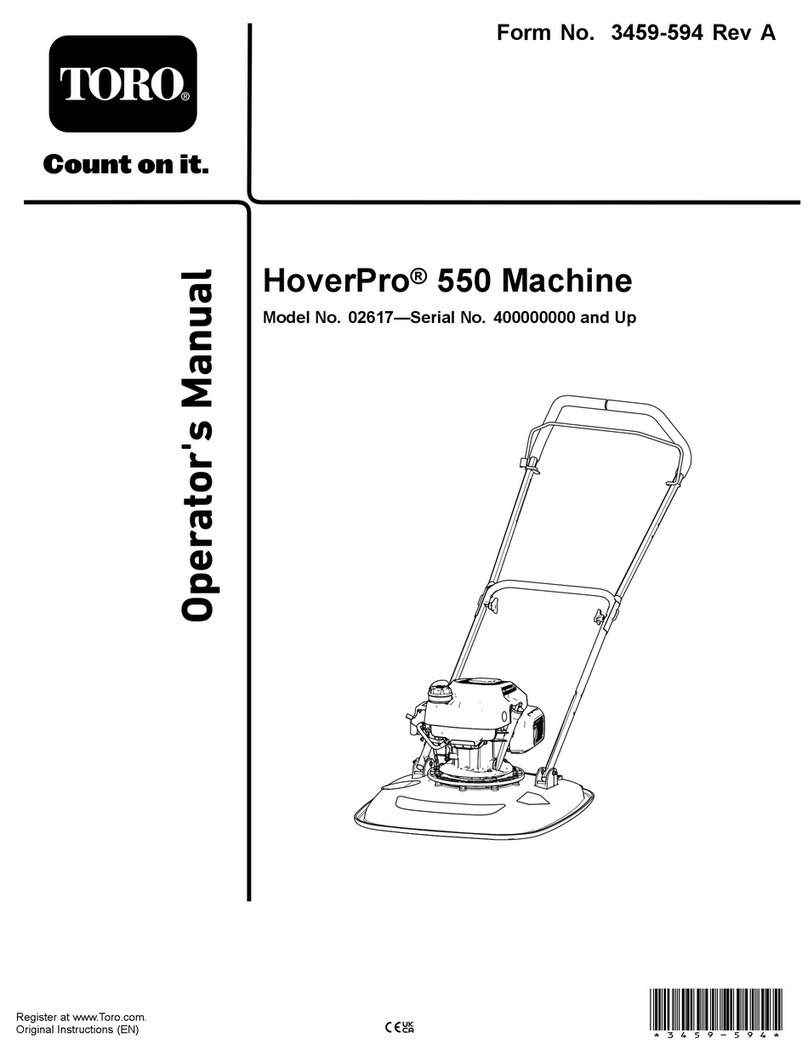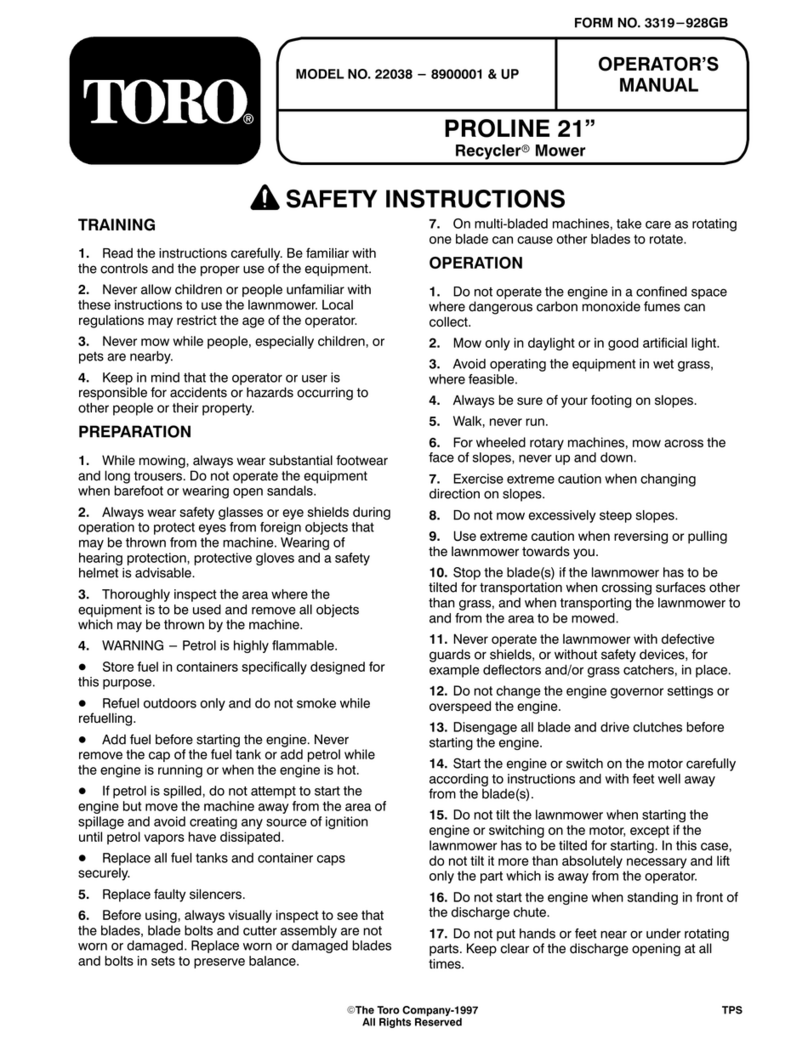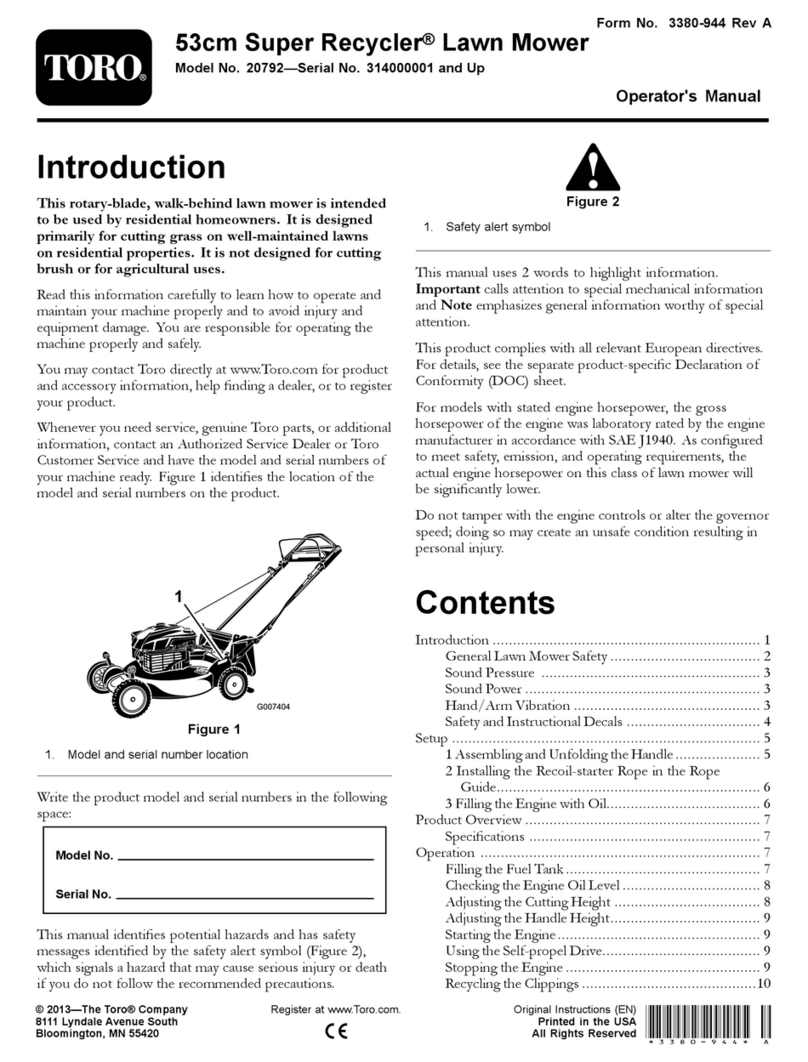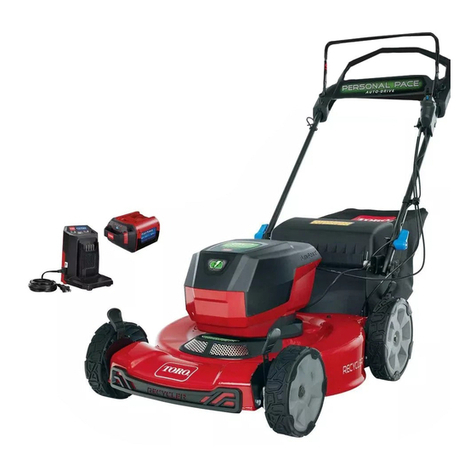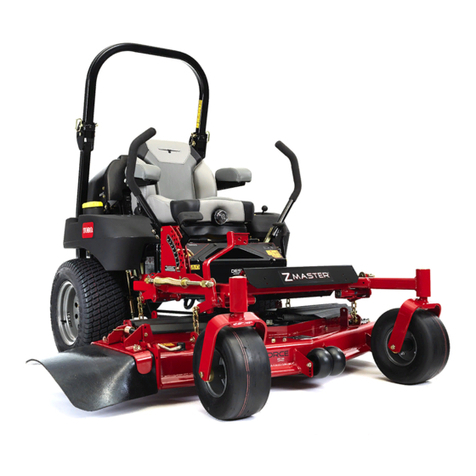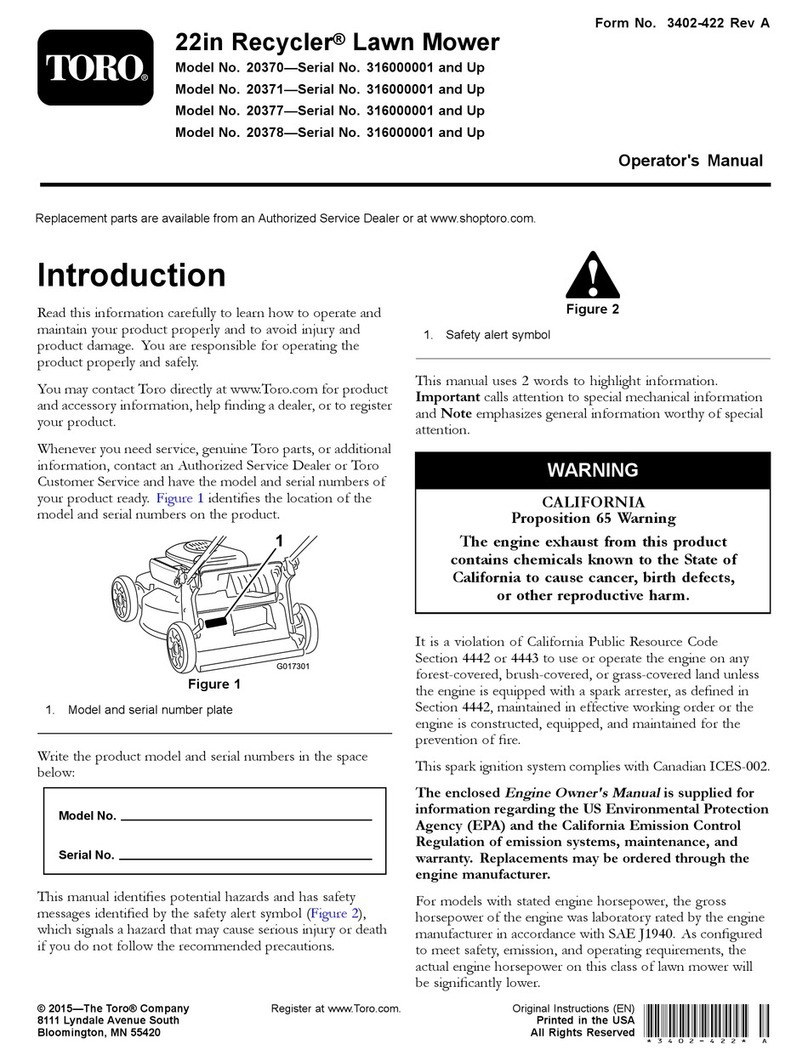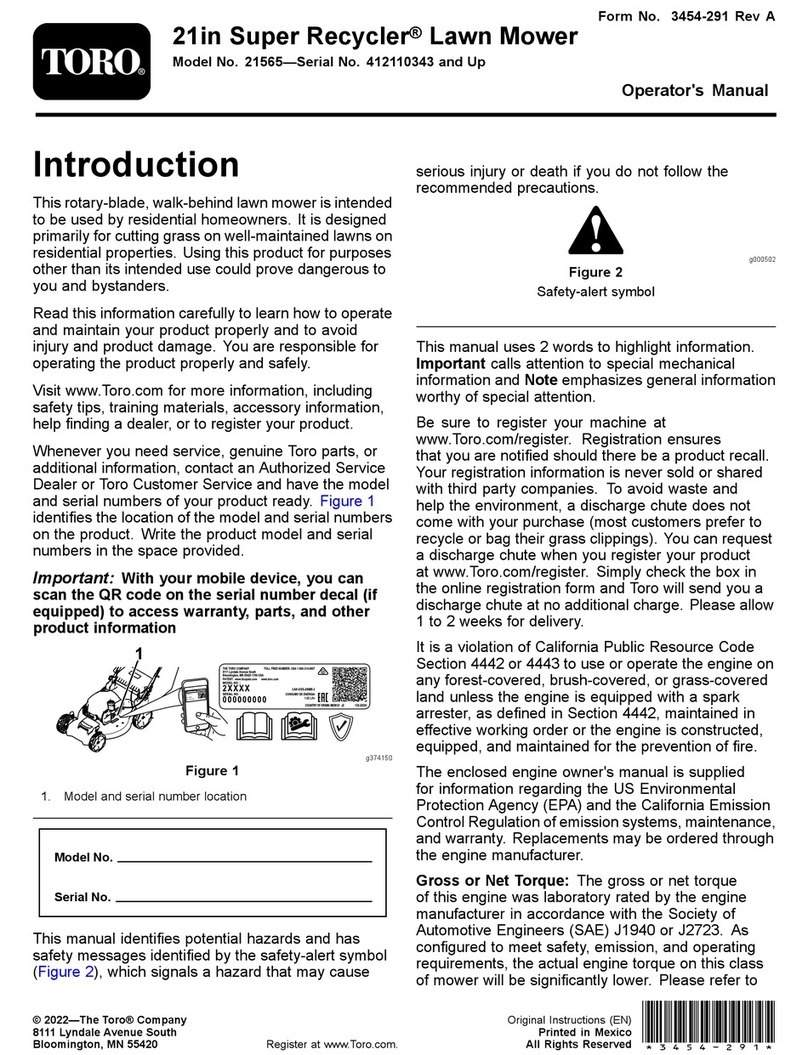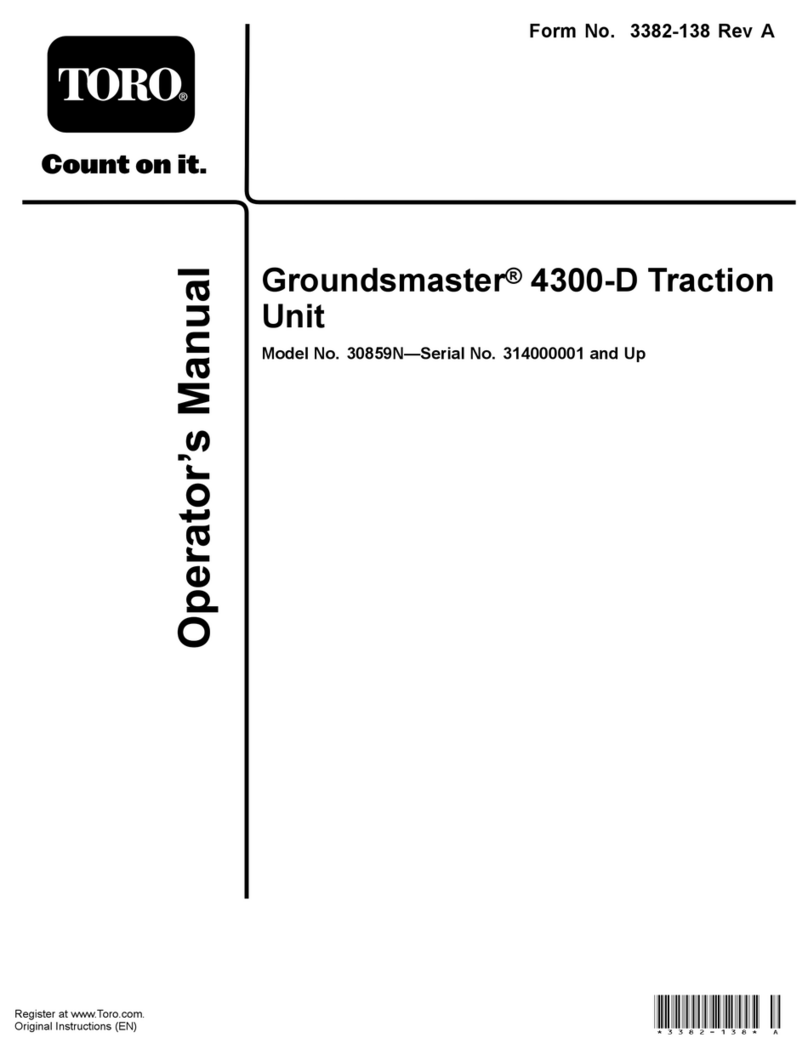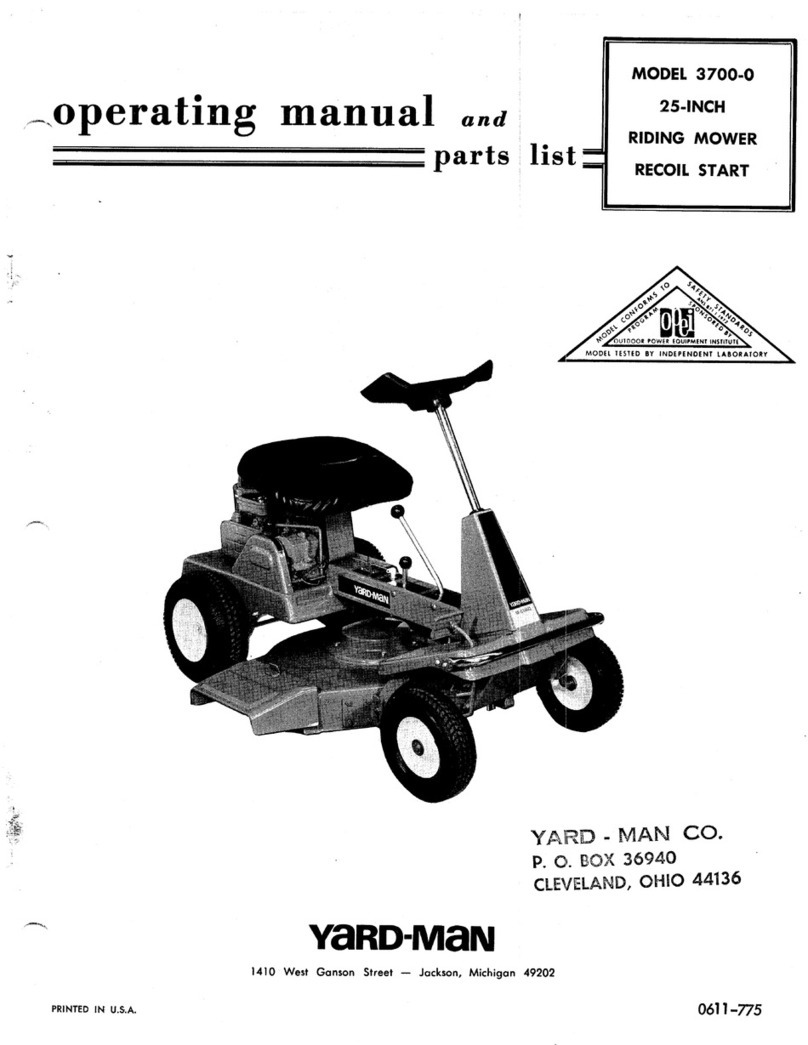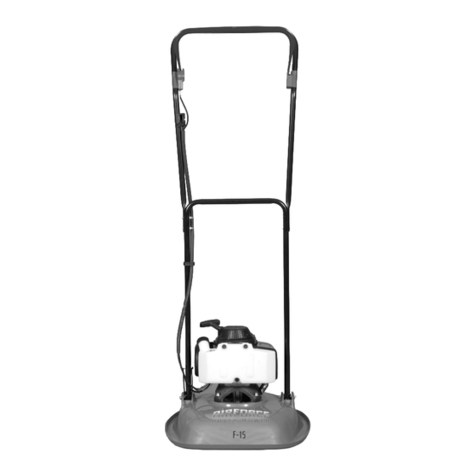
Traction Unit
Engine: Peugeot, four-cycle, four-cylinder, 1.9 liter (1,900
cc) displacement, liquid-cooled diesel engine. 23.5:1
compression ratio. Low idle—1,500 rpm, high idle—3,000
rpm. Oil capacity is 5.3 qts. with filter.
Cooling System: Capacity is 3.5 gal. of 50/50 mixture of
Peugeot recommended anti-freeze.
Fuel System: Capacity is 53 liter (14 gallon) of #1 or #2
diesel fuel.
Hydraulic System: Reservoir capacity is 24.6 liters (6.5
gallon). Replaceable spin-on filter element.
Traction System: Ground speed: Low Range; 0–10.5 kmh,
0–6.5 mph (0–5.5 mph. with mechanical speed limiter
interlock) forward and 0–4.8 kmh, 0–3 mph reverse. High
Range): 0–24.1 kmh, 0–15 mph (0–20 kmh, 0–12.4 m.p.h.
with mechanical speed limiter interlock) forward and 0–8
kmh, 0–5 mph reverse.
Front Axle: Two-speed axle. Separate mowing and
transport selections for faster and more efficient machine
operation. Lubricated with SAE 80–90 weight, EP gear
lubrication. Capacity is 128 oz.
Rear Axles: Two-Wheel Drive—The large diameter wheel
spindles are designed for durability and long wear, yet
provide superior stability and maneuverability. Four-Wheel
Drive , Heavy-duty, agricultural type. Lubricated with SAE
80–90 weight, EP gear lubrication. Capacity is 2.4 kg (80 oz).
Tires/Wheels: Front tires: (2) 26 x 12.0-12, 8 ply. Rear
tires: (2) 20 x 10.0-10, 6 ply. Tire pressure 138 kPa (20 psi).
Seat:Adjustable fore and aft travel and weight.
Diagnostic System: Test ports for: forward and reverse
traction (2-wheel drive), front and rear axle motors (4 wheel
drive), lift and counterbalance circuit, steering circuit and
charge circuit.
Steering System: Automotive type, full power.
Brakes:Totally enclosed, non asbestos, dry multi-disc
individual wheel and parking brakes on the front traction
wheels.
SPECIFICATIONS
9
Electrical System: 12-volt battery with 530 cold cranking
Amps @ –18°C (0° F). 55-amp alternator, ammeter, starter,
key switch and automatic temperature controlled glow plug
controller. Separately-fused run, deck and
instrument/accessory circuits.
Interlock System: Stops the engine if operator gets off the
seat while the cutting deck drive switch is engaged or the
traction pedal is forward or reverse. Prevents the engine from
starting unless the traction pedal is in neutral and the cutting
deck is disengaged. Prevents the cutting deck from operating
unless the axle shift is in LO range.
Warning Lights:
Glow plug indicator
Engine oil pressure warning
Engine coolant temperature warning
Charge indicator
Indicators:
Engine coolant temperature gauge
Fuel gauge
Hour meter
The Cutting Unit
Type: 320 cm (126 inch) width of cut, seven-blade, front-
mounted rotary. 137 cm (54 inch) width of cut, three-blade
center section. Two 94 cm (36 inch) width of cut wings; 229
cm (90 in.) width of cut with one wing up. Rear discharge
with even dispersion over the entire width of cut.
Mowing Rate: Mows up to #8 acres/hr. at 10.5 kmh (6.5
mph).
Trimability: Trims on both sides.
Height-of-Cut: Adjustable from 2.5–12.7 cm (1–5 inches) in
1.2 cm (0.5 inch) increments.
Blades: Seven 48 cm (19 inches) long, 6 mm (1/4”) thick,
and 64 mm (2-1/2 in.) wide, heat treated steel blades.
Belt Idlers: Self-tensioning permanently lubricated idlers.
Wing Decks:Wings can be hydraulically raised from the
operator’s seat for transport or cutting with either wing and
center deck or center deck only. Wings cut from level to 15°
up and down. Further lift disengages the blade and applies a
blade brake.

